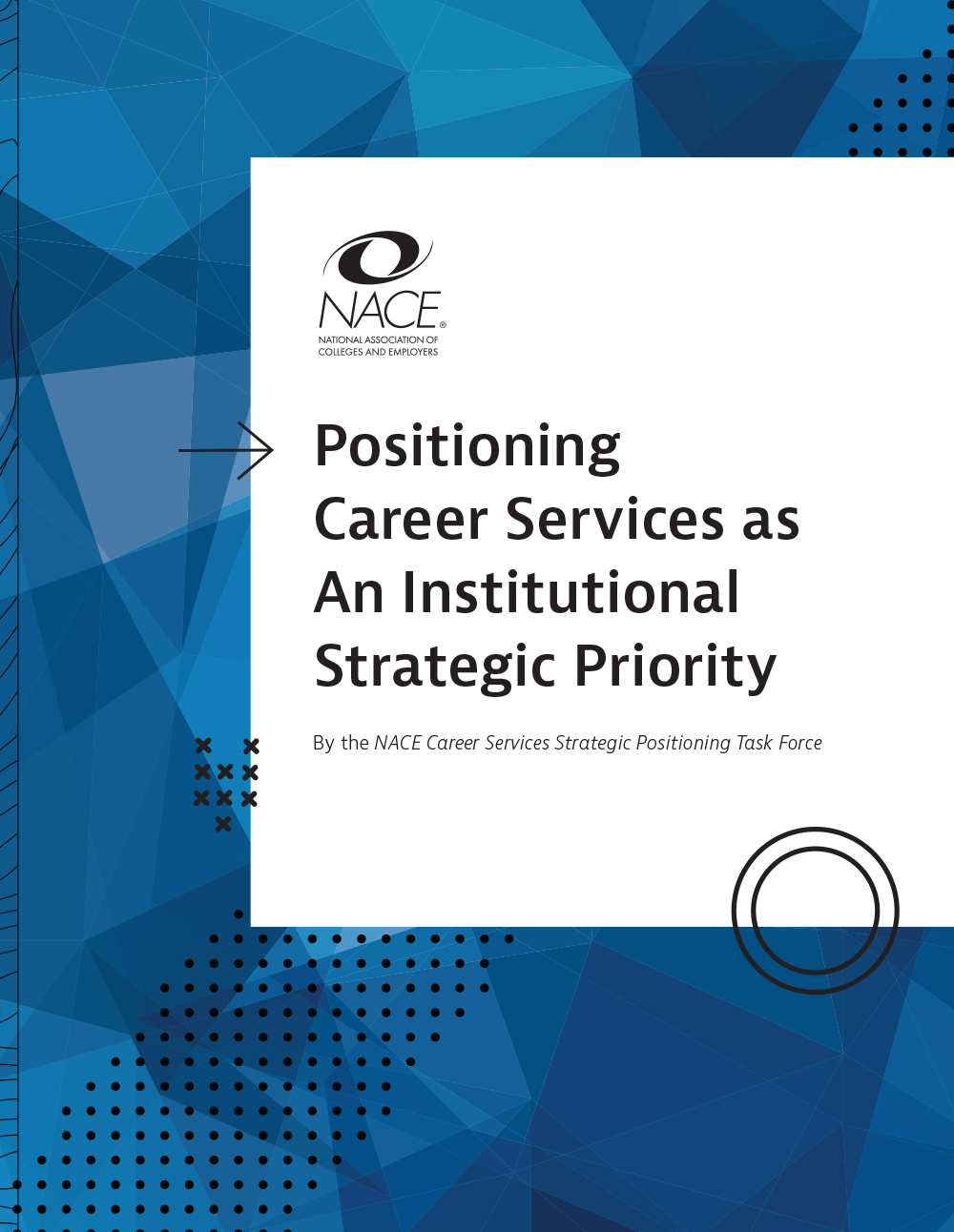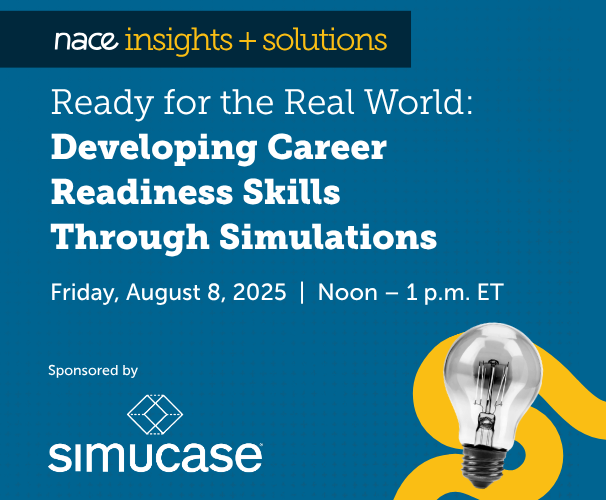The University of Texas at Austin (UT Austin) is a public Research 1 university with 52,000 students and 18 colleges and schools, including medical and law schools. Like many large universities, UT Austin has a highly distributed model of 15 career centers within schools, and each area operates independently.
In 2017, the president and provost reviewed the current career services space through a task force of 40+ faculty, staff, students, alumni, and employers to reimagine the way the university helps prepare students for success beyond graduation. The task force considered such factors as the climate on campus and technology resources, and recommended the creation of a new career center: Enter Texas Career Engagement (TCE) in November 2018.
“This task force created the foundational concept of an institutionally coordinated office to serve all students and career centers and campus partners in a way that is equitable,” explains Norma Guerra Gaier, who was brought on board as the executive director for TCE.
Gaier was tasked with creating the strategic vision, budgeting model, design, and space for all students focused on two pillars—equity and access, ensuring that all students have access to everything career, and all employers have equitable access to diverse talent.
“Developing this student-centered, identity-focused, and interdisciplinary office required me to hire a team of professionals who were also dedicated to inclusive career engagement work,” Gaier explains.

Positioning Career Services as an Institutional Priority
Featuring case studies and a roadmap for elevating career services on campus.DOWNLOAD NOW
“Together, we created a strategic vision and budget priorities to support and create equitable access for our students and employers. That increased knowledge and informed the infrastructure and professional development of our campus peers and partners. It was a process that involved a lot of thinking and insight from others on campus, not just those within our immediate office.”
Strategically, TCE is part of the provost’s portfolio and sits within undergraduate studies, curriculum design, and enrollment management. Gaier sits in an inaugural position on campus. Upon starting, she embarked on a listening tour and was clear that her role was to enhance—not replace—the work that the existing career centers were doing to best serve their students. TCE was created to supplement their work; for example, working together, TCE and the career centers strategized on various technology tools and purchased and implemented career tech tools for all of the career centers.
“I talked to the vice provost and said that I know we have some priorities to think about that we need to advance, but before I go there, I really need to spend some time understanding the complexity of our campus, and listening in on what the goals, needs, and fears are, and where the gaps exist,” Gaier recalls.
“It was about a nine-month process, and while I was able to advance some of the work based on the recommendations from the task force immediately, the bulk of where we landed, what our office looks like, and what our priorities are was a result of the listening tour and the key takeaways that I was able to identify after spending time with my colleagues across campus.”
One outcome from the work of the TCE and campus prioritization of career services is the creation of a zero-credit internship course. This allows students to gain the benefit of a curricular internship noted on their transcript, but without the burden of paying for associated tuition. Content is provided on essential skills, such as budgeting, career management, and other related career readiness topics.
The other initiative was getting a university-wide job board implemented—initially, only one college was using Handshake. Under Gaier’s leadership, Handshake was launched across campus, and the outcomes have been very encouraging; now, 70% of colleges have exclusively adopted Handshake, and the other colleges also promote the platform to their students as a secondary resource. Both employers and students have provided positive feedback about the change.
The strategy has focused on constant communication in working with the various offices, which is especially essential on a large campus. This has been managed through a directors’ meeting that Gaier facilitates monthly. In addition, the Texas Campus Career Council (TC3), comprised of all of the career services professionals on campus, does front-line sharing and meets nearly monthly. Prior to Gaier, staff paid dues to TC3 to fund its work; she altered this so that TCE funds any expenses related to TC3.
The organizational model within TCE focuses on different areas:
- Advanced degree students, including Ph.D. candidates, master’s-level students, and post-docs; this was the first team intentionally dedicated to support Ph.D. and post-docs to focus on academic and industry positions.
- Undergraduate students who may not be pursuing traditional opportunities and are in the exploration stage.
- Students who have interdisciplinary interests.
- Career and identity development and how they interact.
- Internships and career experiences, including micro-internships, project-based experiences, research, and entrepreneurship.
- Employer engagement comprehensive services to help employers connect with UT talent to build a diverse candidate pipeline.
- A first-destination and career outcomes focus with coordination of the various efforts on campus.
All of these include a focus on equity and access. Currently, there are 30 staff members within TCE.
A critical component of TCE is the employer engagement team, especially the collaboration with Development, Alumni Engagement, and the college career centers. TCE provides a gateway for employers to more easily navigate campus and connect with students. Policies and procedures are also a focus for TCE with the other career centers.
Parallel to the model, Gaier and TCE was allowed to create a new space for staff, and, in spring 2022, they opened a new center that features an ample event space, as well as 40 tech-fitted interview room suites for those who are recruiting across campus and for use by college career offices that do not have dedicated space or that have a need for additional event and recruiting space.
“It was designed again with the purpose to support our vision of inclusivity,” Gaier points out.
“We were able to incorporate the creation of classrooms and meeting spaces that are available free of charge to our career center partners across campus and to many of our other partners on campus who are seeking a space for career-related programming. We recognize that while we might lead these efforts, we are not the only participants in preparing our students for their futures.”
Gaier says that when TCE works directly with employers to reserve space, it is typically because they are looking at varied majors across campus.
“So again, we focus on equity and access through all of our engagement programs, resources, and facility, and we strive to complement the college and school career centers through our collaboration with them,” she says.
TCE also partners with Texas Exes, the university’s alumni office, on a mentoring and networking platform called “Hooked In.”
“It’s kind of our campus-wide LinkedIn that has really served our campus well to support not only the learning, mentoring, and career connections for our students, but also for our alumni,” Gaier notes.
“Our office strategically partnered with Texas Exes to bring that to campus during a critical time—the pandemic—when we knew that some of these networking opportunities were being missed.”
Gaier identifies several key components for creating a new student-centered, identity-focused, and interdisciplinary career center that offers equity and access for all, including:
- Leaning in and listening—Whether we realize it or not, we often approach our work with assumptions, which is natural. Gaier stresses that although she has been doing this work for 30+ years, she does not know it all and still has a lot to learn. She says that having an open approach to the work and listening not only to leaders, but particularly listening to those on the frontlines who see the true issues and the gaps that exist is critical.
- Checking back in and assessing impact—The listening tour Gaier embarked on was very important for gathering insight prior to launch and communicating goals, but there needs to be follow up to check on the impact and effectiveness of the career center’s work. The career center staff should reconnect with their colleagues—even with those with whom they may not be partnering—to conduct assessments of impact and what the career center is and is not doing well.
Says Gaier: “While learning what isn’t going well is not always pleasant, the impact of understanding that and then being able to collaborate with strategic partners on solutions helps to elevate the work and ensure that everyone is headed in the right direction together to best serve our students, employers, and campus partners.”







